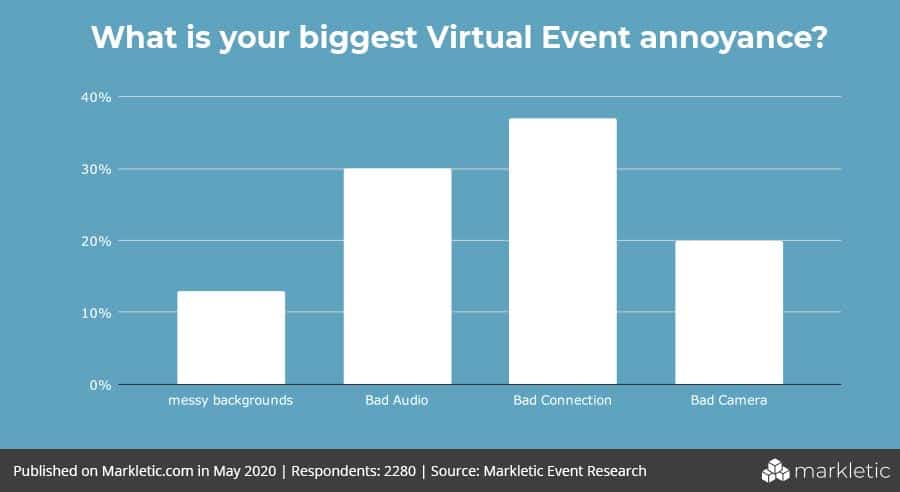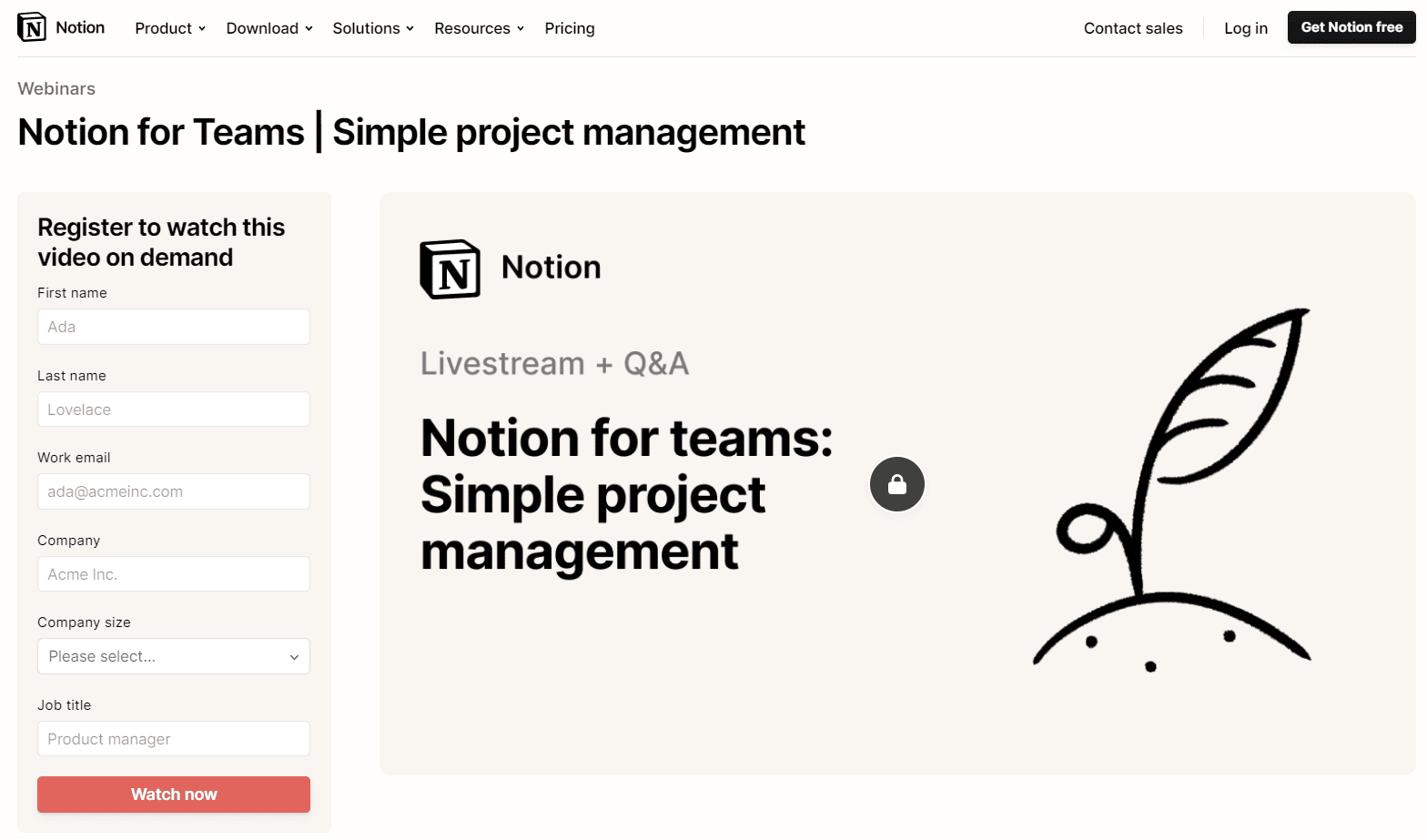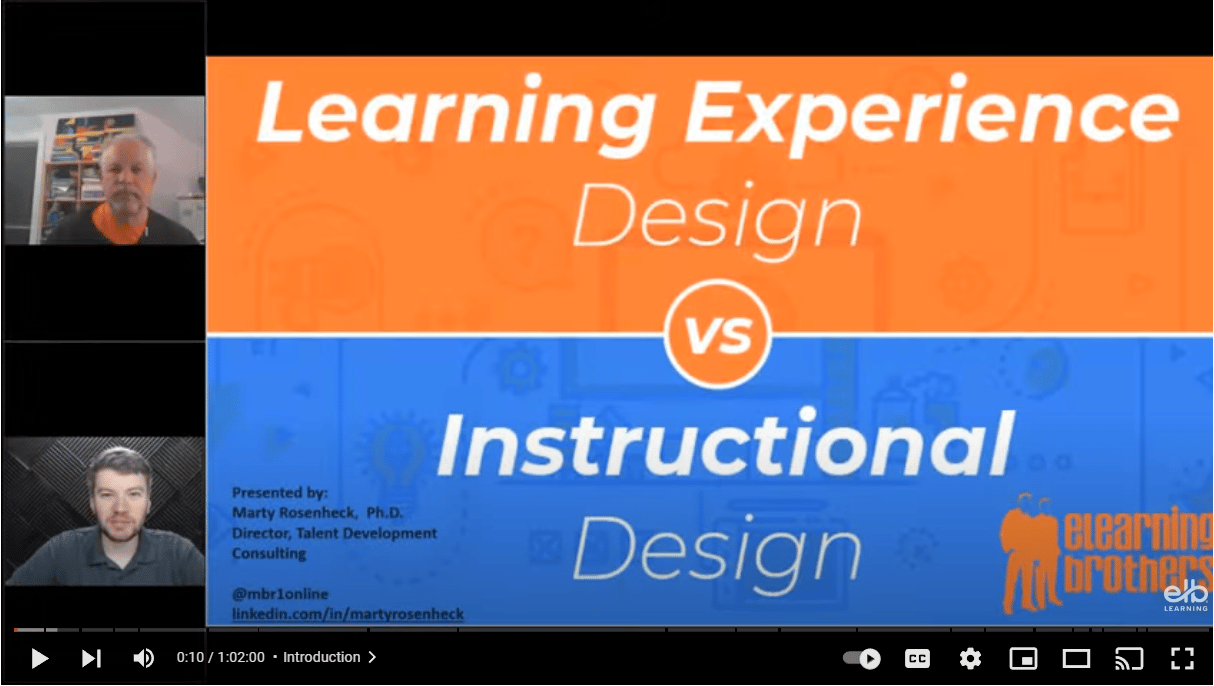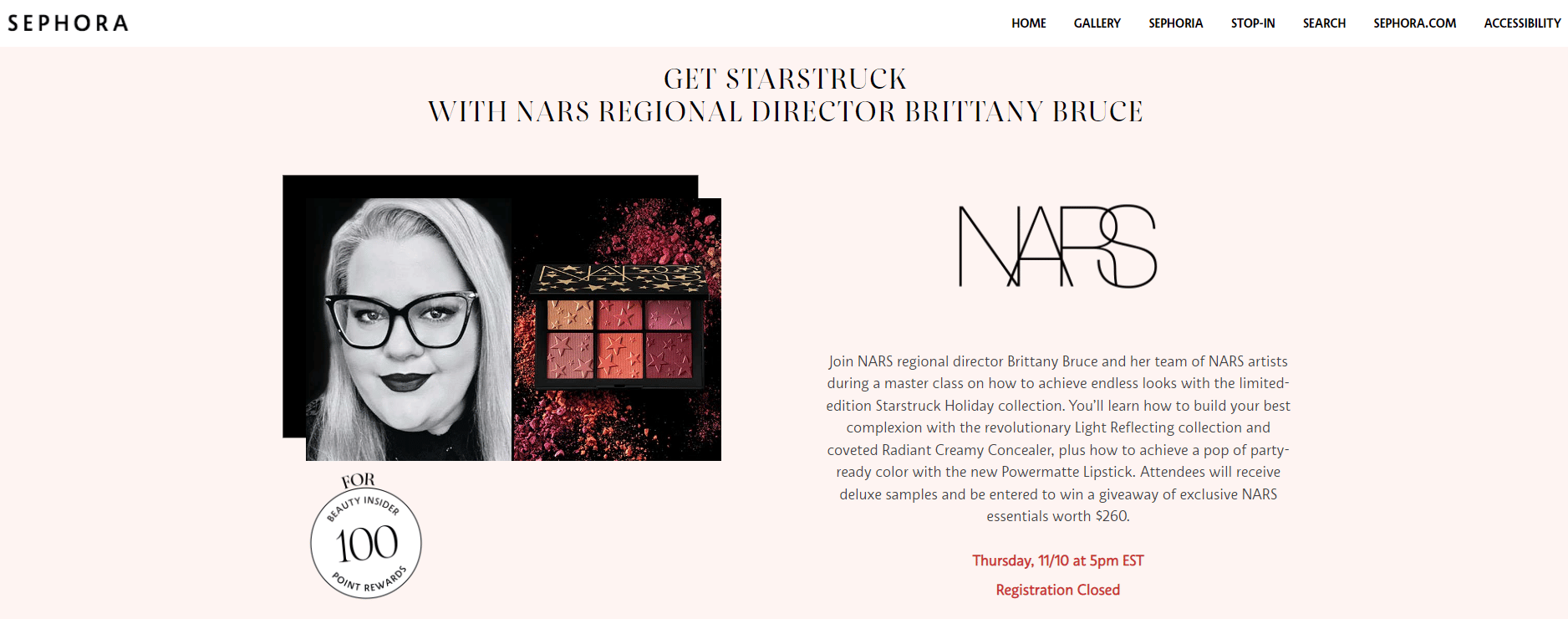Gathering online is a popular way to connect with a wider community that defies geography.
That’s true whether you’re chatting in Slack with coworkers, tuning in for a live stream, or attending an online event or webinar.
The pandemic accelerated the shift to online events. They’re still going strong and are more common now than ever.
One of these online events is especially relevant to brands and marketers – the webinar.
What is a webinar? How do you set one up and host it? What are some successful examples of webinars? It’s all in this guide.
What is a webinar?
A webinar is a seminar that occurs online. (Web + seminar = webinar.)
When you think of an in-person seminar or conference, you probably picture many speakers presenting industry news, innovations, and education in front of a live audience.
A webinar is pretty much the same, but it all plays out online, synchronously.
- The audience watches live speakers and presentations on a particular theme or topic from the comfort of their own homes.
- During and after the presentations, the audience can participate in ways unique to webinars, such as asking the presenter questions, chatting with other viewers worldwide, or even collaborating with the presenter through interactive elements like surveys or polls.
- Some brands record their webinars and repurpose the content, including offering replays for people who couldn’t attend live.
What are the benefits of hosting a webinar?
There are a lot of reasons to add webinars to your brand repertoire. When done well, they can help you reap all of these benefits:
- Build audience trust: Webinars represent a big opportunity to demonstrate your expertise and build trust through direct interactions with your audience.
- Attract new leads: Online events are a draw for lots of people, and with a little promotion, new leads will find your webinar and sign up.
- Create buzz around your brand: Online events like webinars are great for generating talk and buzz around the host: your brand.
- Demonstrate your products/services: Webinars represent a chance to demonstrate how your relevant products/services work to an engaged audience.
- Increase conversions: Demonstrating your expertise and knowledge and building trust through webinars can convert more leads to customers.
Ultimately, a well-crafted, well-produced webinar can bring ideal buyers straight to your virtual doorstep.
- Webinars are the most popular type of content for B2B professionals, according to DemandGen’s Content Preferences Study.
- 91% said they prefer webinars over articles, whitepapers, and blog posts, according to a BrightTALK survey.
- Webinars are a great idea for brands in most verticals, especially those in financial services, consulting, SaaS, and pharmaceuticals (the industry with the highest attendance rate).
Get the daily newsletter search marketers rely on.
Best practices for putting together and hosting a webinar
If you’re interested in hosting a webinar or adding a weekly or monthly webinar series to your content lineup, consider these best practices.
1. Use the right webinar technology
You can’t run a smooth webinar without software.
Thankfully, there are many good webinar platforms with the right features for your needs at almost every price point.
Generally, you’ll want to consider your budget, how many attendees you want to have the capacity for, recording options (for repurposing webinar content later), and interactive options (like live surveys and polls during presentations).
Here are a few webinar software options to start:
- Zoom: Everyone’s favorite (or not) meeting software can also host your larger webinars. It includes tracking and reporting, CRM integration, and interactive features like chatting and reactions.
- GoToWebinar: This option has a robust set of features for planning, promoting, designing, presenting, and analyzing your webinar.
- eWebinar: If you’d rather host an evergreen webinar (one that plays on-demand but still has some live/interactive elements), this option is your best bet.
2. Choose a topic
Choosing one major, overarching topic for your webinar is a good idea. This keeps your event focused and its value clear to attendees.
If your webinar is in a single-speaker format, try to choose a narrower topic than something too broad like “personal finance planning” or “search engine optimization.”
Those topics are vast and can’t be fully covered in an hour. Instead, choose a deeper topic like “financial planning for new parents” or “SEO and your site content.”
If you plan to have multiple speakers, presentations, or sessions within your event, consider choosing a broader main topic, with each session exploring facets of that topic.
Always consider the value of your topic for your target audience. What would interest them? What information would help them?
Topic research can help you answer these questions, such as polling your audience on social media, checking out what topics your competitors are addressing in their content, or even doing keyword research on a topic to see how many people are looking it up.
Whatever topic you choose, consider how to make it interactive and engaging. Ultimately, people who attend webinars want to learn but don’t want to feel like they’re sitting in a boring lecture.

3. Choose a presenter and/or a speaker (or a panel of speakers)
Choosing the right presenter for your webinar will significantly impact its success.
The right presenter will be a credible authority on your topic and comfortable speaking in front of people. You can choose someone from within the company – or not.
For example, you could invite a guest presenter, such as an industry influencer or well-known expert, to host and speak about the topic.
Sometimes inviting multiple expert speakers makes more sense for a webinar. Perhaps a team inside the company could present together, or different experts from various brands could gather virtually for a panel discussion.
4. Pick a format that makes sense
There are multiple formats your webinar can take. Consider what would work best for presenting your topic, including the number of speakers you plan to have.
Here are some of the most common formats:
- Product demo: Show the audience how a product works or demonstrate how to complete a specific task with a product.
- Q&A: Host a question and answer session where the audience can ask an expert (or a group of experts) their questions on a specific topic.
- Single presenter: A single expert presents information, research, insights, or tips on a specific topic. This could be a tutorial or a “how-to” topic.
- Multiple presenters: This is the same concept as the single presenter webinar, but two or more experts share the “stage” and present information.
- Interview: A host interviews a guest expert on a specific topic. An audience Q&A with the expert might follow.
- Panel: A group of experts has a conversation about a topic.
- Case study: This is a conglomeration of the interview and the single presenter webinars. Present a case study of one of your client’s success with your brand, then interview that client.
5. Create an engaging presentation
The visual format of webinars gives you a huge opportunity to get creative with presenting and displaying information to your viewers.
- Slides: Preparing a slide deck to show alongside presenters talking is the most common way to keep viewers engaged because it’s effective. That’s especially true if the slides are visually creative, fun, or helpful for understanding the topic. Some brands offer the slide deck for download after the webinar, too.
- Video: Short video clips or animations are an interesting way to illustrate key points. Look beyond your industry and relate your topic to pop culture, music, TV shows, characters, etc.
- Screenshare: Demoing some software? Teaching attendees how to complete a task on a computer? Share your screen in real-time.
- Demo: For product demos, point the camera at the product and show it off in action.
6. Give yourself time to prepare
There are lots of moving parts involved when it comes to webinars. You’ll need to think about software and tech, budget, presenters, branding, slide decks, promotion efforts, and more.
There will likely be many different hands involved, so you’ll need to give everyone enough time to do their part, as well.
Organizers of small webinar events report needing 3-6 weeks to promote the event. Large webinar organizers report needing more than six weeks.
Keep in mind these different timelines, especially as you plan and set a date for the webinar. Give yourself and your team enough padding to get it done right.
7. Market your webinar
Nobody will know about your webinar without some promotion behind it. You’ll need to spread the word through social media and your website. You can also email your subscriber list announcing the event and inviting them to register.
In all of these promotions, tell your audience about the value they’ll receive from attending your webinar and how it will help them with a particular question or problem.
- Social media: Create a post on all channels announcing your webinar, including the topic, presenters, date, time, and where to register/how to attend. Reshare this post regularly in the weeks leading up to the webinar.
- Website: Create a registration landing page on your site where attendees can register, and create a blog post that shares details about the webinar. Link to the landing page in your blog post and social media posts.
- Emails: Send emails to your subscribers telling them about the webinar and, close to the date, reminding them to sign up. Include a link to your registration landing page.
8. Practice your presentation and test your equipment/tech
According to a Markletic survey, most virtual event attendees report bad connections and bad audio as the biggest annoyances (followed closely by bad cameras and messy backgrounds).

Annoyances like these make it less likely that your attendees will stick around or get any value from your webinar.
The best way to plan for equipment failures and flubs? Practice.
Days before your webinar, do a practice run-through with everyone involved. Test equipment. Test audio. Test connections. Check backgrounds.
This is also a good chance to practice presentations and work out any kinks. You’ll ensure your speakers are prepared, all the slides are error-free, and everyone will know what to do when the webinar goes live.
5 examples of brands doing webinars the right way
The following brands have used webinars successfully to build brand awareness, nurture their audiences, increase conversions, or attract new customers.
Notion
Notion, a SaaS company, hosts weekly webinars centered around their product – a workspace/docs/spreadsheet/page-builder hybrid for teams, businesses, and individuals.
Each webinar explores Notion’s capabilities and updates from its developers. Many of them share tutorials or demos on using Notion for different use cases.

Additionally, all of Notion’s past webinars are available on-demand after the live presentation with a simple sign-up. All of them can be found on a dedicated page on their website.

ELB Learning
ELB learning creates tools to facilitate online learning for people who design courses and instructional materials.
Their webinars focus on career and skills development for learning designers and are hosted by experts on their team.

U.S. Bank
U.S. Bank has an entire library of webinars under the umbrella of personal finance management.
Webinar topics include “Protect yourself or your loved ones from elder fraud,” “Insider tips for student debt,” and “Should you buy now, pay later?”

Reed Words
Reed Words, a U.K. copywriting agency, ran weekly webinars exploring topics to help brands find their voice and express it well.
A panel of four experts from their team discussed building a brand voice in this session, followed by an audience Q&A.

Sephora
Sephora, the reigning makeup chain in malls everywhere, hosts regular live webinars with influencers and brand ambassadors whose products are sold in-store.
For example, the regional director of the NARS makeup brand recently guest-hosted a webinar that showed customers how to apply NARS products to achieve different makeup looks.

These events aren’t free – instead, Sephora customers spend their loyalty points (earned by making purchases) to register for webinars. However, attendees also get free gifts mailed to them, such as deluxe samples and automatic giveaway entries.
This way, Sephora’s webinars feel like exclusive events, and registration fills up soon after the events are posted.
Webinars are a dynamic content type loaded with potential
Technology has improved to a degree where online webinars and virtual events can be just as engaging and worthwhile as attending them in person.
If you plan it right, create it with care, and promote it effectively, your webinar could be your best investment in content this year.
And, once you get the knack for producing and hosting webinars, you can create them regularly to engage with customers, increase conversions, and build your brand authority and visibility online.
Finally, don’t forget to record your live webinar so you can repurpose that content later. Webinar replays are just as valuable for nurturing leads. You can get even more mileage out of that content if you strategize right.
By now, you should have enough basics to create and host your first webinar. Don’t panic. Enlist your team to help you, and plan, plan, plan. You’ve got this.
Opinions expressed in this article are those of the guest author and not necessarily Search Engine Land. Staff authors are listed here.
